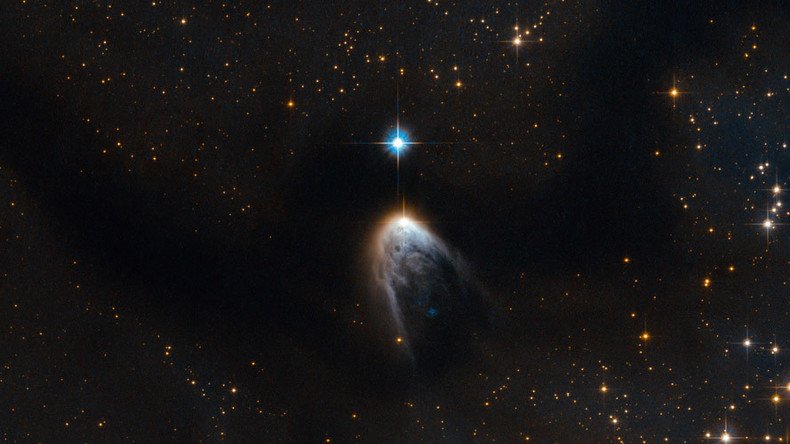Hubble telescope snaps emergence of new, supersonic gas belching star (PHOTO)

The galaxy has a new celestial kid on the block – the IRAS 14568-6403 – an emerging star that is burning its way through a massive dust cloud in space.
At the moment, the new star is still partially concealed by a circinus molecular cloud made up of dense dust and gas.
Molecular clouds are where stars are created and the thick materials found within them mean they often block out starlight, NASA explains.
While it may have an awkward moniker, the European Space Agency believe IRAS 14568-6304 to be part of an extremely bright “nest of young stellar objects” that are still hidden, and yet to be observed by astronomers.
A picture taken by the Hubble Space Telescope shows the large gaseous fireball poking out from under a dark space cloud.
READ MORE: Supermassive black holes born from collapsing gas clouds, study suggests (PHOTO)
Researchers at the ESA say the star is ejecting gas at a supersonic speed and is at least 2,280 light years away.
“If our eyes could register the faint infrared glow of the gas in the cloud, it would stretch across our sky more than 70 times the size of the full moon. It contains enough gas to make 250,000 stars like the sun,” an ESA statement explains.
Filamentary Taurus: @ESAHerschel portrays an intricate stellar crib in Taurus Molecular Cloud http://t.co/M2G4CJGuXUpic.twitter.com/X6w6cBNwle
— ESA (@esa) June 8, 2015
RAS 14568-6403 was found using the Infrared Astronomical Satellite – a joint project launched in the 1980s by NASA, the United Kingdom’s Engineering Research Council, and the Netherlands Agency for Aerospace Programs.
It was the first satellite to carry out an infrared survey of the sky, which discovered six new comets, according to the NASA mission website.
Thanks to next gen technology, WISE's sensitivity is 100s of times greater than it's predecessor, the 1983 Infrared Astronomical Satellite.
— NASA (@NASA) December 14, 2009
A much more technologically advanced infrared imaging craft known as WISE was launched by the space agency in 2009 and later captured pictures of almost a billion stars and asteroids.












